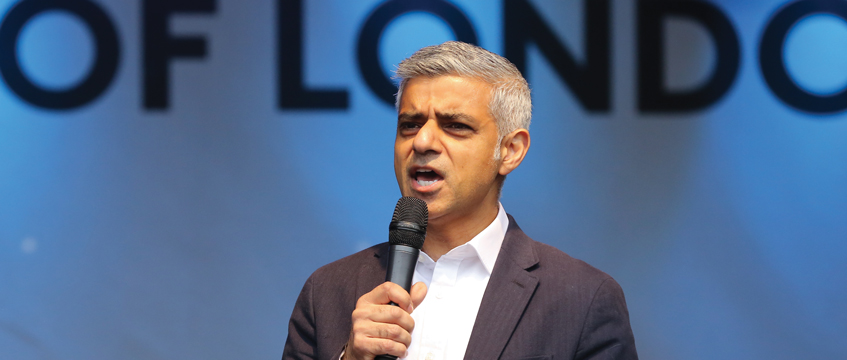Mayor of London Sadiq Khan has released his draft London Plan – the major strategy document which will shape the capital’s development over the next 20-25 years.
The highly-anticipated draft plan, which will be subject to consultation, is the first substantial revision of London’s spatial development strategy since 2011. Khan said he expects councils to refuse any applications that come forward with homes that do not meet his new standards.
New delivery target for capital and small sites
A new target of delivering 65,000 homes a year has been set for the capital – roughly double the current rate of homebuilding. For the first time, targets in the plan show how capacity can also be reached on small sites, where the mayor believes there is capacity for 24,500 homes a year– typically those between one and 25 homes – and asks boroughs to approve applications for small developments unless they do not meet his strict design standards.
Strategic industrial land
Greater protection for strategic industrial land has been proposed in a bid to maintain space for uses such as “last mile” distribution close to central London, consolidation centres and collection points. The plan sets out a principle of no “overall net loss of industrial floorspace capacity” across London on designated strategic industrial land and locally significant industrial sites.
The plan says all boroughs should aim to intensify industrial capacity except for Barking & Dagenham, Havering and Newham, where industrial land vacancy rates are currently significantly above the London average and “limited release” to other uses could be appropriate. The principle of “no net loss of floorspace capacity” does not apply to sites previously used for utilities infrastructure or land for transport functions which are no longer required.
Density matrix scrapped
Khan is planning to encourage higher density residential development around town centres and transport nodes by scrapping the density matrix. He has removed density limits to boost the number of homes built. The mayor supports tall buildings, but these must be in the right places and to high design and safety standards – boroughs must identify where these are suitable in principle.
Affordable housing
The plan includes the mayor’s commitment for 50% of all new homes built to be genuinely affordable – to be achieved through planning, investment and building on public land. It strengthens his new approach of offering private developers a fast-track route to planning permission if they reach a minimum of 35% affordable.
Design standards
The new policy emphasises the importance of good design and will be applicable to buildings of all types, including low-rise, medium and high-rise. This new approach is supported by a far stronger policy on housing standards, including minimum space standards, which sets out how a home should be designed.
Expanding in the suburbs
The mayor has announced plans to work with the wider South East – exploring with willing partners opportunities for additional growth in sustainable locations outside London. New growth corridors – identified as areas of higher density – have been set out alongside planned new infrastructure, which will support the development of jobs and homes. These include: Crossrail 2, Thames Estuary, Bakerloo line extension, Central London, Elizabeth Line East, Heathrow, Elizabeth Line West, Trams Triangle/London-Gatwick-Brighton mainline and HS2.
Pubs, fast food and culture
Stronger protection for pubs and support for plans for new public houses in suitable locations are included in the plan. The mayor said more public toilets must be built and should be suitable for all users, including disabled people and families with young children. However, the policy encourages boroughs to refuse planning applications for new fast food takeaways near schools.
Flexible workspace
For the first time, the mayor of London is enforcing the provision of flexible workspace for SMEs in bigger office schemes. Developers of offices totalling more than 25,000 sq ft in size will have to show that they have considered giving over some of the space “flexible workspace suitable for micro, small and medium-sized enterprises”.
Khan said: “With London’s population expected to increase by 70,000 every year, reaching 10.8 million in 2041, it’s vital we properly plan for growth with new affordable homes in every area of the capital.
“I am using all of the powers at my disposal in my first draft London Plan to tackle the housing crisis head on – removing ineffective constraints on homebuilders so that we can make the most of precious land in the capital to build more homes in areas with the best transport links.
“My London Plan sets out how we are planning for the challenges our great city faces, but crucially focuses on my vision of a London that welcomes growth, celebrates its diversity and ensures every Londoner gets the opportunity to fulfil their potential.”
To send feedback, e-mail Louisa.Clarence-Smith@egi.co.uk or tweet @LouisaClarence or @estatesgazette











